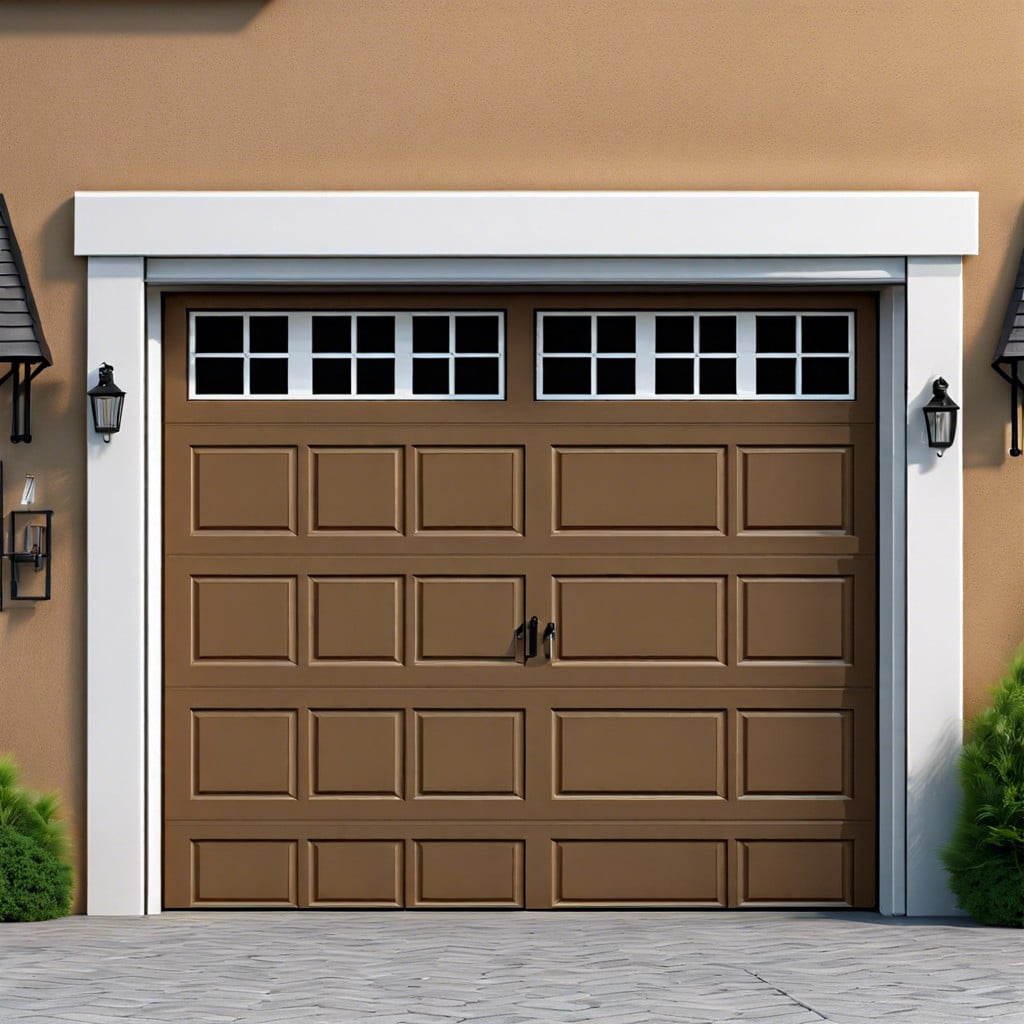Learn the reasons why your garage door closes then opens and how to fix it.
Key takeaways:
- Clear away any obstructions blocking the threshold.
- Adjust the travel down setting on your garage door opener.
- Check for worn or misaligned springs and rollers.
- Make sure the limit switch is properly adjusted.
- Remove any blockages and ensure the sensors are aligned.
Your Threshold May Be Blocked

Your garage door might be playing a game of peek-a-boo because something is blocking the threshold. Dirt, debris, or even a sneaky garden gnome could be getting in the way.
- Inspect the area around the base of your door for any obstructions.
- Clear away leaves, rocks, or twigs that may have accumulated.
- Look for signs of damage or wear on the threshold itself.
Sometimes, a small object can escape the naked eye but set off the door’s safety sensors. A quick cleaning can often solve the problem.
Remember to keep this area tidy to avoid future door tantrums.
Your Travel Down Setting Needs Adjustment
Sometimes your garage door thinks it has traveled down far enough when it really hasn’t, causing it to pop back open. This setting tells the door how far it should go before it settles comfortably on the ground. If it’s off, it’s like the door’s saying, “Close enough!” and leaving a gap.
Here’s how to adjust it:
- Locate the travel down setting on your garage door opener – usually, a dial or screw.
- Turn the dial or screw slightly to adjust the setting. If your door keeps bouncing back up, it needs to travel a bit more.
- Test the door. Hit the close button and see how it behaves. If it closes snugly, you’re golden. If not, tweak a bit more.
In no time, your garage door will stop performing its one-door circus act.
Springs Or Rollers Are Worn Or Misaligned
When your garage door decides it’s training for a marathon, closing and then opening right back up, tired springs or rollers might be the undercover culprits. Springs and rollers that have seen better days can mess with the door’s balance. A misaligned setup can confuse the sensors, tricking them into thinking there’s an obstruction.
Springs – especially torsion springs – go through a lot. They’re the muscle behind every lift and lower, so they wear out over time. Regularly inspect them for signs of wear and tear. If they’re looking rusty, stretched, or uneven, it’s time for a replacement.
Rollers, on the other hand, need to glide smoothly. Dirt, grime, or deformities in the rollers can also cause the door to act up. Clean them regularly and lubricate with a silicone-based spray every six months or so.
Lastly, if the door’s path gets misaligned due to wonky rollers or springs, the sensors get confused, initiating a reverse. Spotting and replacing these worn-out parts early can save you a whole lot of irritation. Happy tinkering!
You Need to Adjust the Limit Switch
Sometimes your garage door is simply confused. Yes, even garage doors can have their “off” days. The limit switch, which tells your door when to stop moving, might be out of whack.
Here’s what you can do:
Locate the limit switch adjustment screws. These are usually on the motor unit.
Turn the down limit adjustment screw. If the door doesn’t close all the way, give it a quarter turn in the appropriate direction. Test and repeat as necessary.
Be ready for trial and error. Adjust, test, then adjust again if needed. Like threading a needle while wearing mittens, it takes a bit of patience.
Remember, a well-adjusted limit switch ensures your garage door stops playing peekaboo when you’re trying to close it.
You Need to Check for the Presence of Any Blockage
Alright, Sherlock, it’s time to put on your detective hat. Garage doors are like kids—they’re masters at getting stuck on the simplest things. Let’s hunt for any potential blockages.
First, play a game of “What’s in My Garage Door’s Path?” Ensure there’s no debris, like leaves, tools, or even small toys loitering around the sensor area. Those sensors are perfectionists and will refuse to let the door close if anything crosses their line of sight.
Next, channel your inner clean freak. Wipe the sensors with a soft cloth to remove dust or dirt, as even a smudge can hamper their efficiency.
Lastly, check if the sensors are aligned. They need to be best friends, always looking at each other directly. If they’re misaligned, they won’t talk nicely, and your door will be all drama and no action.
Keep these points in mind, and you might just save yourself the hassle of calling in reinforcements.